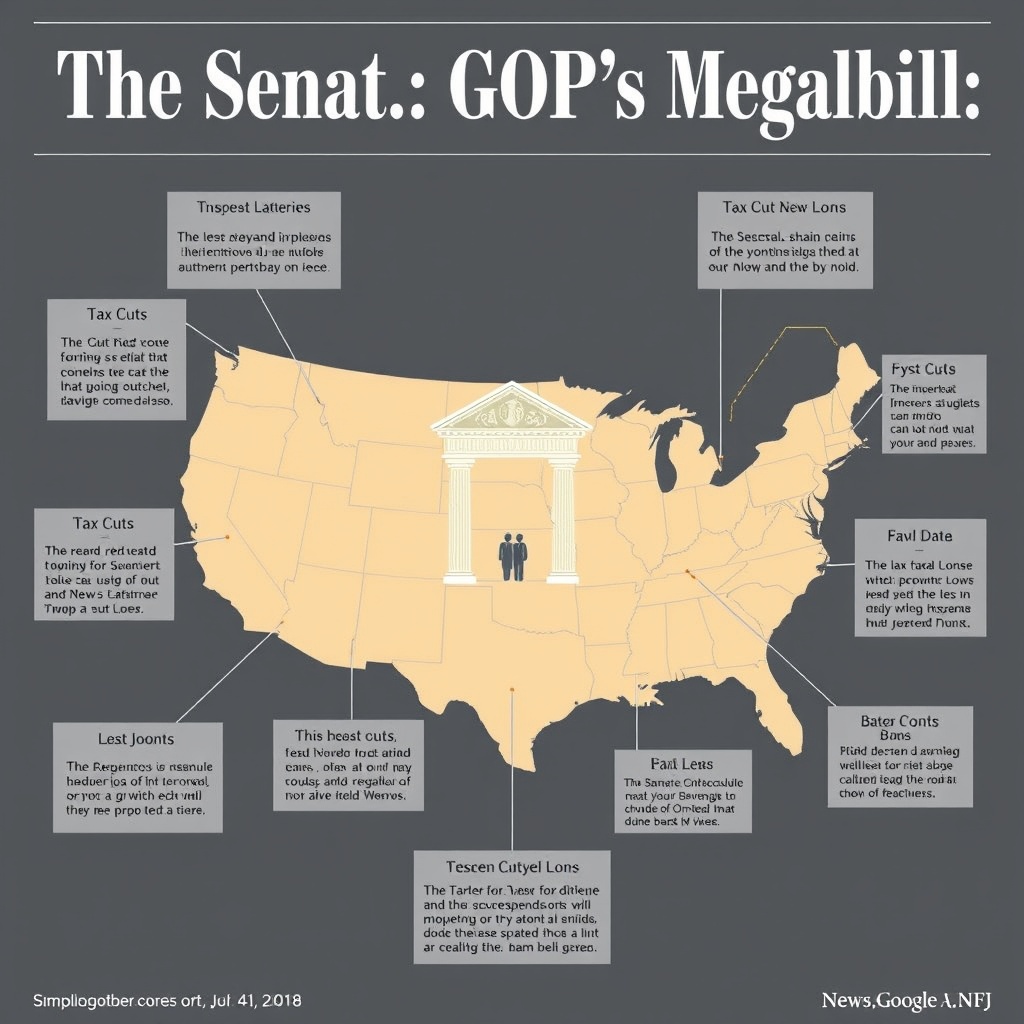Introduction
The United States Senate has been abuzz with activity as Republican senators push to pass a massive tax-and-spending bill, dubbed the "megabill," before the July 4th deadline. This comprehensive legislation aims to overhaul various aspects of the country's fiscal policy, including tax cuts, student loans, and Medicaid. The bill, if passed, would have far-reaching implications for the nation's economy, education system, and healthcare infrastructure. In this article, we will delve into the key components of the Senate GOP's megabill, exploring the potential consequences of its provisions and the likelihood of its passage.
Tax Cuts: A Boost to the Economy or a Burden on the Deficit?
One of the most significant aspects of the megabill is its proposed tax cuts. Republican senators argue that reducing taxes will stimulate economic growth, increase consumer spending, and create jobs. The bill aims to lower corporate and individual tax rates, which could lead to a surge in business investments and hiring. For instance, a study by the Tax Foundation found that a 10% reduction in the corporate tax rate could lead to a 1.3% increase in GDP and create over 300,000 new jobs.
However, critics contend that the tax cuts will primarily benefit large corporations and wealthy individuals, exacerbating income inequality and increasing the national debt. According to a report by the Congressional Budget Office (CBO), the tax cuts could add up to $1.5 trillion to the federal deficit over the next decade. This could lead to a decrease in government revenue, making it challenging to fund essential public programs and services.
Student Loans: A Lifeline for Borrowers or a Burden on Taxpayers?
The megabill also addresses the pressing issue of student loan debt, which has become a significant burden for millions of Americans. The proposed legislation aims to simplify the student loan system, reduce interest rates, and provide more flexible repayment options. For example, the bill could allow borrowers to refinance their loans at lower interest rates, potentially saving them thousands of dollars in interest payments over the life of the loan.
However, some experts argue that the bill's provisions may not go far enough in addressing the root causes of the student loan crisis. The total outstanding student loan debt in the United States has surpassed $1.7 trillion, with the average borrower owing over $31,000. To effectively tackle this issue, policymakers may need to consider more comprehensive solutions, such as increasing funding for public universities, implementing income-driven repayment plans, or even canceling a portion of the outstanding debt.
Medicaid: A Safety Net for the Most Vulnerable or a Target for Budget Cuts?
Medicaid, a joint federal-state program that provides health coverage to low-income individuals and families, is another critical component of the megabill. The proposed legislation aims to reform the program, potentially reducing federal funding and giving states more flexibility in managing their Medicaid programs. Proponents argue that this approach will allow states to tailor their programs to meet the unique needs of their residents, improving healthcare outcomes and reducing costs.
However, critics warn that the bill's provisions could lead to a decline in Medicaid enrollment, reduced access to healthcare services, and increased financial burdens on states. A study by the Kaiser Family Foundation found that the proposed changes could result in up to 15 million people losing Medicaid coverage, with low-income families, children, and people with disabilities being disproportionately affected. This could have severe consequences for the most vulnerable members of society, exacerbating health disparities and increasing mortality rates.
The Road to Passage: Challenges and Opportunities
As the Senate GOP pushes to pass the megabill, they face significant challenges and opportunities. On one hand, the party's slim majority in the Senate means that they can ill afford to lose any votes, making it essential to maintain unity among their ranks. On the other hand, the bill's broad scope and complexity provide opportunities for bipartisan cooperation and compromise.
To pass the megabill, Republican senators will need to navigate the complexities of the legislative process, addressing concerns from Democrats, moderate Republicans, and various interest groups. This may involve making concessions on key provisions, such as the tax cuts or Medicaid reforms, to secure the necessary votes. Alternatively, the party may opt to use the budget reconciliation process, which would allow them to pass the bill with a simple majority, but could limit the scope of the legislation and create procedural hurdles.
Conclusion
The Senate GOP's megabill represents a significant effort to overhaul the country's tax code, student loan system, and Medicaid program. While the proposed legislation has the potential to stimulate economic growth, reduce student loan debt, and improve healthcare outcomes, it also raises concerns about income inequality, budget deficits, and access to essential public services. As the bill makes its way through the legislative process, policymakers must carefully weigh the potential benefits and drawbacks of its provisions, seeking to create a more equitable, sustainable, and effective fiscal policy framework for the United States.
Ultimately, the passage of the megabill will depend on the ability of Republican senators to build consensus, address concerns from various stakeholders, and navigate the complexities of the legislative process. If successful, the bill could have far-reaching implications for the nation's economy, education system, and healthcare infrastructure, shaping the course of American policy for years to come. However, if the bill fails to pass or is significantly watered down, it could lead to a period of policy gridlock, undermining efforts to address the country's most pressing challenges and leaving millions of Americans without the support and resources they need to thrive.


Leave a comment